Mark Anthony Neal's Blog, page 921
February 12, 2013
He Was Not Afraid: Dr. Akinyele Umoja On Alfred 'Skip' Robinson
NYU Press | WeAllBeTV
In We Will Shoot Back: Armed Resistance in the Mississippi Freedom Movement , renowned scholar-activist Akinyele Umoja persuasively argues that armed resistance was critical to the efficacy of the southern freedom struggle and the dismantling of segregation. He challenges long-held beliefs about the role of nonviolence within the civil rights movement and uncovers the hidden narratives of Mississippi’s black armed resistance groups.
Published on February 12, 2013 04:11
February 11, 2013
Scar Story: On Beauty
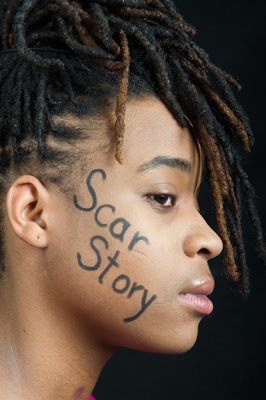
Scar Story: On Beauty by La-vainna Seaton | special to NewBlackMan (in Exile)
Growing up I went through many hardships; some obstacles harder then others. I battled with my beauty much of Jr. High School, I just never understood why all my friends were getting looked at by boys and I was getting looked at as an equal. Beauty is defined from within, but the perception of beauty is depicted through media and society. People view beauty as being gorgeous and making a lot of head turns when walking. People view beauty as one image, a look, but people have got it all wrong. Insecurities fuel the term beauty. Insecurities of self is what helps the realization of beauty. No one is perfect but the term beauty is…. how ironic.
I was a tomboy, I liked sports but I still wanted to be looked at as beautiful too. During my 8th grade my cousin came to live with us, she would be the basis of my life changing forever. She was beautiful. All the guys in the neighborhood wanted her. They would come to me and tell me to give her messages. She brushed them off and stood strong. Until one day I started seeing her hanging around a group of boys; she was giggling then she disappeared with them. I thought nothing of it, and each day I would see her with a new boy. I grew angry that she was getting recognition for her beauty and I wasn’t. I decided a different approach, I decided to start dressing like a female. If tight clothes meant you were beautiful well by all means some-one was going to notice me. Went bike riding the next day and I was approached by a boy I would see constantly with my cousin. He asked me where I was going and asked if he could join. I replied yes and we rode into the sunset.
We spoke about almost everything and I felt secure. At the end of the ride he gave me his number and told me to come see him later on that night. He whispered in my ear I was beautiful and then continued on. That was all I needed to hear, I was ecstatic. I went home all bubbly. No boy ever told me I was beautiful, I went and told my sister about the conversation. She advised me to take the compliments, but don’t go and see him. I thought she was just hating, so I ignored her advice and went to meet with him.
It was nothing that I imagined. We were in a dark alleyway. He told me there was nothing to be afraid of, he gave me liquor and made me smoke. I started feeling nauseous. He then led me in to an old rusty car as he called his boys who were hiding. I screamed numerous times. I was raped by several boys. They each took their turn. When it was done, they vanished into the night sky. I was 13. That was my first time.
That day changed my life forever. It hurt me to know that one word meant so much to me because of what I saw around me. I was envious; I wanted what my cousin had. I was shown reality that day. I lost a piece of me, as well as gained strength within me.
Beauty is undefined; don’t let anyone define it for you.
#DiaryOfFlyTakeAway: Who knows themselves better than you.
#Triumph: Battles lost are the ones often misunderstood.
***
‘Scar Story’ is part of EJconversations, a multi media, multi generational, multi racial conversation series founded by award winning international journalist, Esther Armah. This is Season 4; we have them on radio, on stage via theater, live via panel discussions. We launched in NYC, expanded to Chicago and Texas. ‘Emotional Justice’ is a term created by Armah as a path to have conversations about the untreated trauma that shapes our identity, relationships, institutions and transforming that into triumph.
Published on February 11, 2013 17:50
Reflections: The Supremes and the Politics of Image
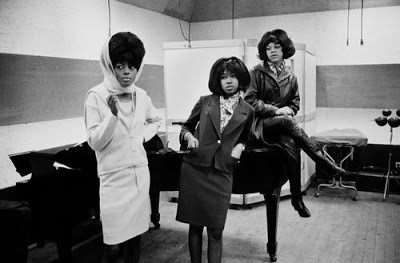
Reflections: The Supremes and the Politics of Image by Mark Anthony Neal | NewBlackMan (in Exile)
The meteoric rise of The Supremes in the 1960s can be best measured in the context of singular tragic events in American history: When President John F. Kennedy was murdered in Dallas in November of 1963, few knew who The Supremes were, yet when Dr. Martin Luther King was murdered in Memphis in April of 1968, Diana Ross and the Supremes appeared on The Tonight Show with Johnny Carson to help bring sense to the tragedy.
That many of the front-line Civil Rights activists like Bob Moses, Diane Nash, Stokely Carmichael and the Greensboro Four—Joseph McNeil, Franklin McCain, Ezell Blair, Jr., and David Richmond—were barely out of high school, like The Supremes, is a reminder of how these young folk literally changed the world. While no one will ever mistake the Freedom Summer of 1964 for a groundbreaking appearance on The Ed Sullivan Show, the Supremes and Motown were waging a battle on behalf of African-Americans within the realm of image making. The success of the Supremes embodied an inside/outside strategy that mirrored the radical versus reform politics (at least in the early 1960s) of the most visible Black political spokespersons.
Though the southern theater of Civil Rights Movement seemingly occurred in far away places such as Birmingham, Montgomery, Atlanta and Jackson, it was brought closer to home for the young women of the Supremes via television and the presence in the city of Detroit of movement surrogates like Reverend C.L. Franklin (Aretha Franklin’s father) and activists such as Grace Lee and James Boggs. Detroit was also not immune to the kinds of racial violence that would erupt as Black protesters clashed with police and others. As early as 1943, as Detroit was dealing with the influx of Black migrants, the city erupted as Black and White youth clashed on Belle Isle. The city again erupted in July of 1967 when Detroit police officers raided a Black after-hours club. The subsequent violence forced then governor George Romney (father of Mitt) to request federal troops to quell the violence and re-establish order.
Though little of the movement was directly reflected in the music and presentation of The Supremes until the late 1960s, Motown played some role in the increased visibility of Civil Rights in the city and nationally. Detroit was the site of the Great March for Freedom, which was led by Dr. King in June of 1963, weeks after The Supremes “A Breathe Taking, First Sight Soul Shaking, One Night Love Making, Next Day Heart Breaking Guy” was released and became their highest charting single to date. The Great March featured a preview of Dr. King’s famous “I Have Dream” speech, and Berry Gordy had the foresight to record the speech, releasing it as a recording on August 28, 1963—the same day as the March on Washington for Jobs and Freedom. The Great March recording would be the first spoken world album released by the label and the foundation of what would later become the Black Forum subsidiary which eventually released recordings from Stokely Carmichael, poets Langston Hughes and Margaret Danner, Bill Cosby (his address to a newly formed Congressional Black caucus), Amiri Baraka and an album by singer-songwriter—and Black Panther leader—Elaine Brown.
In the midst of the Black Freedom Struggle Motown, and in particular The Supremes, were symbols of changing Race relations and the breaking of racial barriers. The presence of The Supremes as glamorous, refined and respectable young Black women, was a counter to centuries old stereotypes of Black women as lascivious, insatiable and sexually available—stereotypes that Nina Simone outlined musically in her classic “Four Women.” The appearances of The Supremes on mainstream variety shows like the Ed Sullivan Show (on which they appeared fifteen times in the 1960s), American Bandstand, The Steve Allen Show (where they made their first national appearance in 1964), The Andy Williams Show or the Mike Douglas Show were not just critical for what it said about the humanity of African Americans, it also said a great deal about the position of Black women in American society.
 To be sure, there were female pop stars before the emergence of the Supremes. In the 1920s one could look at Blues artists like Ma Rainey, Mamie Smith, Ethel Waters and, of course, the legendary Bessie Smith. Between the war years, the Andrews Sisters—the most logical precursors to The Supremes—became pop sensations. In the 1950s Patti Page—one of the best selling female artists of the 1950s—and Doris Day, singer turned Rom-Com film star were the very definition of mainstream feminine pop stars. By the time Rock N’ Roll began to take flight in the late 1950s, vocal groups like The Shirelles, The Chiffons, the Chantels, the Crystals, and the Ronnettes were the feminine faces of the moment. Even within the Motown camp, The Supremes competed with girl groups such as The Marvelettes, who scored Motown’s first major hit with “Please Mr. Postman.”
To be sure, there were female pop stars before the emergence of the Supremes. In the 1920s one could look at Blues artists like Ma Rainey, Mamie Smith, Ethel Waters and, of course, the legendary Bessie Smith. Between the war years, the Andrews Sisters—the most logical precursors to The Supremes—became pop sensations. In the 1950s Patti Page—one of the best selling female artists of the 1950s—and Doris Day, singer turned Rom-Com film star were the very definition of mainstream feminine pop stars. By the time Rock N’ Roll began to take flight in the late 1950s, vocal groups like The Shirelles, The Chiffons, the Chantels, the Crystals, and the Ronnettes were the feminine faces of the moment. Even within the Motown camp, The Supremes competed with girl groups such as The Marvelettes, who scored Motown’s first major hit with “Please Mr. Postman.” In an era in which there were few or any examples of women pop artists who were publically acknowledged as being songwriters or producers, it was not surprising that The Supremes, like many of their female peers, were subjected to a rigid double-standard intended to police their behavior both onstage and off. To this end, the legendary Maxine Powell, who founded her “Modeling and Finishing School” in Detroit in 1951, was brought in to “polish” The Supremes (and other Motown acts), as Gordy had his eye on establishing a presence for the trio at high end venues like The Copa in New York City.
Mary Wilson suggests that Powell’s presence was more about Berry Gordy’s ambitions, as all three women were products of two parent households, in which they were raised to comport themselves in a manner that respected to themselves and others. Wilson’s reminder about her upbringing, is one example of the subtle ways in which the trio attempted to push back from their brand, and establish identities that better reflected who they were as young, confident, talented and famous women—Black women—who were arguably the most well known Black women in the world at the height of their commercial success from 1964-1967; they were not yet twenty-five years old.
By the time The Supremes began to be fitted for gowns designed by Bob Mackie and his close associate Michael Travis, they had become the epitome upscale feminine style, sharing space with the likes of Jacqueline Kennedy Onassis and Elizabeth Taylor. Even when the style of The Supremes tuned to “mod” mirroring the styles of Twiggy and Dusty Springfield, as was the case during their Love Child phase, they did so with aplomb. Though for many in the mainstream, The Supremes were mere high fashion in Blackface, the group was inspired by notions of style long celebrated in Black communities in figures like Josephine Baker, Dakota Staton, Ruth Brown, Laverne Baker, and perhaps most famously, Lena Horne. Often un-spoken in the glitter that adorned The Supremes was their celebration of generations of Black women artists who never had the opportunity to function in the entertainment mainstream in the ways that the Motown trio did.
Implicit in the image of The Supremes was the impact that they had on generations of young Black women and girls, who saw the group not only as style icons but role-models, as so many of them negotiated the troubling history of their images and their self esteems. By the time The Supremes began their regular two-and-three week yearly runs at The Copa—exploding the established pay-scale by the end of the 1960s—there were literally thousands of little girls (and probably little boys), of all races and ethnicities standing in from of mirrors with a hairbrush or toothbrush pretending that they were Mary, Diana or Flo. The power of those cues would be witnessed generations later with the accent to pop stardom of figures like Irene Cara, Whitney Houston, Jennifer Hudson, Mariah Carey, and another fabulously successful trio (also once a quartet), Destiny’s Child.
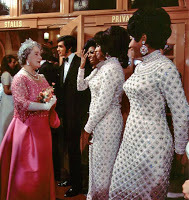 Yet part of the challenge of selling the Supremes, was the selling of the image of Black women’s bodies. Though there were many dynamics that led to the firing of Florence Ballard from the group, concern over Ballard’s (relatively) more voluptuous and full-figured body was a concern for some at Motown. As Diana Ross drew comparisons to fashion model Twiggy—the inspiration for fashion models whose dress sizes and body types are simply not accessible to the average American woman—Ballard’s body was interpreted as one that would not be appealing to mainstream audiences. In many ways Ballard’s presence in the group served as a powerful image for many Black women who saw their own body-types reflected on stage in her. It was perhaps one of the things that Berry Gordy took for granted in his desire to make The Supremes appealing to the broadest audiences possible.
Yet part of the challenge of selling the Supremes, was the selling of the image of Black women’s bodies. Though there were many dynamics that led to the firing of Florence Ballard from the group, concern over Ballard’s (relatively) more voluptuous and full-figured body was a concern for some at Motown. As Diana Ross drew comparisons to fashion model Twiggy—the inspiration for fashion models whose dress sizes and body types are simply not accessible to the average American woman—Ballard’s body was interpreted as one that would not be appealing to mainstream audiences. In many ways Ballard’s presence in the group served as a powerful image for many Black women who saw their own body-types reflected on stage in her. It was perhaps one of the things that Berry Gordy took for granted in his desire to make The Supremes appealing to the broadest audiences possible. What was being established with the success and circulation of The Supremes’ image, was a unique intellectual property—a brand—that would be forever linked to what Andre Harrell has called “High Negro Style.” For all of the importance to Motown of having the Supremes on the cover of mainstream magazines and being featured on television special, these magazines and television shows were also in the business of attracting advertising, and packaging The Supremes helped them attract viewers and the companies that wanted to sell their products in ways that were fundamentally unprecedented with regards to Black performers.
***
Duke University Professor Mark Anthony Neal is the guest curator of Come See About Me: The Mary Wilson Supremes’ Collection, which runs at the African American Museum in Philadelphia (AAMP) until June 30th.
Published on February 11, 2013 08:40
Melanie Fiona: "Wrong Side of a Love Song" (video dir. Larenz Tate)
JAY Z's Life+Times premieres the exclusive music video for Melanie Fiona's Grammy nominated single, "Wrong Side Of A Love Song" directed by Larenz Tate.
Published on February 11, 2013 04:16
Duke Professor Bruce Hall on the Battle for Timbuktu
Duke Office Hours
The fabled city of Timbuktu has recently been a center of conflict between the French military and Islamic militants. Complicating the clash are tensions within Mali among the country's ethnic groups. In a live "Office Hours" webcast interview Feb. 8, Duke professor Bruce Hall explains some of the historical and cultural context of the conflict.
"There is nothing 'less racial' about the situation in Northern Mali because of a history of 'mixing' than anywhere else," Hall told the International Business Times in an article published last week. "Race is not about the biology; it is about the ideas and practices that link biological traits to value which are claimed to be transmissible inter-generationally."
Joining Hall is Duke senior Jennifer Denike, who completed a study abroad program in Mali in the fall of 2011.
"In fact, in the absence of a strong international security presence, it seems very likely to me that racialized violence will occur on a much greater scale than it has so far," he said.
Hall is the author of "A History of Race in Muslim West Africa, 1600-1960.″ At Duke, he is an assistant professor of history and African and African American Studies. This year he is a visiting scholar at Stanford University and is scheduled to participate in Friday's interview via Skype.
Published on February 11, 2013 04:00
MHP Show: The Cultural Reality of the Rihanna/Chris Brown Drama
Visit NBCNews.com for breaking news, world news, and news about the economy
with Salamishah Tillet & Byron Hurt.
Published on February 11, 2013 03:36
February 9, 2013
Up with Chris: Could a National Daycare System Ever Be On the Agenda?
Visit NBCNews.com for breaking news, world news, and news about the economy
with Gloria Steinem, Marlo Thomas, and Melissa Harris Perry.
with Gloria Steinem, Marlo Thomas, and Melissa Harris Perry.
Published on February 09, 2013 16:03
On the February 11th 'Left of Black': The 40th Anniversary of Roe v. Wade and Reproductive Justice for Women of Color
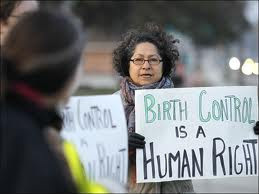
On the February 11th Left of Black: The 40th Anniversary of Roe v. Wade and Reproductive Justice for Women of Color
Forty years ago the landmark decision of Roe v. Wade legally protected a woman’s right to have an abortion, yet for women of color—poor women of color in particular—Roe v. Wade has offered little protection in their desires to fully pursue reproductive justice.
For nearly thirty years, the Chicago Abortion Fund (CAF) has sought to “overturn economic barriers to reproductive choice,” by engaging and mobilizing “low-income and poor women to become advocates for expanded reproductive access.”
Gaylon Alcaraz, Executive Director of the Chicago Abortion Fund and Cynthia Greenlee of the Carolina Abortion Fund, join Left of Black host and Duke University Professor Mark Anthony Neal in a discussion of the legacy of Roe v. Wade and the continual political and structural impediments to Reproductive Justice for poor women and women of color.
***
Left of Black airs at 1:30 p.m. (EST) on Mondays on the FranklinCenterAtDuke Channel on Youtube: http://www.youtube.com/user/FranklinCenterAtDuke
Viewers are invited to participate in a Twitter conversation with Neal and featured guests while the show airs using hash tags #LeftofBlack or #dukelive.
Left of Black is recorded and produced at the John Hope Franklin Center of International and Interdisciplinary Studies at Duke University.
***
Follow Left of Black on Twitter: @LeftofBlack Follow Mark Anthony Neal on Twitter: @NewBlackMan Follow Gaylon Alcaraz on Twitter: @GaylonAlcaraz Follow Cynthia Grenlee on Twitter: @GreenleeDonnell
Published on February 09, 2013 14:26
'Banished': Q & A with Filmmaker Marco Williams
Franklin Humanities
Marco Williams' 2007 documentary Banished takes on one of the overlooked stories of American history: racial cleansing during the early 20th century where African-American inhabitants were expelled from dozens of communities and their property confiscated.
Screened at the Smith Warehouse on Thursday evening, the documentary was followed by a panel discussion featuring Williams and historian William Chafe and moderated by Pauli Murray Project director Barbara Lau.
"To what degree do we own the history of our foremothers and forefathers?" Chafe said. "I can't tell you how many times I've argued with somebody who says, 'Why blame me? I didn't do any of that, why are you making me feel responsible?'"
Banished was the first film in the "Rights! Camera! Action!" series, presented by the Duke Human Rights Center at the Franklin Humanities Institute.
VISIT US AT: http://humanrights.fhi.duke.edu
Published on February 09, 2013 07:35
February 8, 2013
Beyoncé, The Super Bowl and the Politics of “Civility”
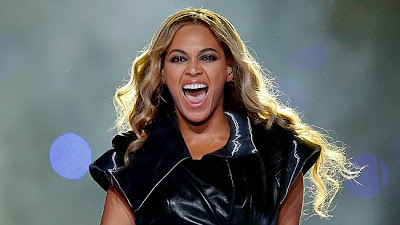
Beyoncé , The Super Bowl and the Politics of “Civility” by David J. Leonard | NewBlackMan (in Exile)
America’s “culture warriors” have been busy with the conclusion of this year’s Super Bowl. Lamenting Beyoncé’s clothing, her gyrations, her sexuality, and the inappropriateness of her dance moves, they have converted their feigned outraged over lip synching to the real movements of her body.
Over at the National Review, Last night’s Super Bowl half-time show was ridiculous — and gratuitously so. Watching Twitter, it was really no surprise that men made comments about stripper poles and putting dollar bills through their TV sets, was it?
Why can’t we have a national entertainment moment that does not include a mother gyrating in a black teddy?
Not to be out-done, Rich Lowery also at National Review, which is clearly taking a break from its war on women with a war on Beyoncé, waxed nostalgically about Super Bowl IX:
Someday a cultural historian will write the definitive history of the Super Bowl halftime and how it morphed from a showcase for the likes of the Grambling State University marching band to a platform for gyrating pop stars. (Michael Jackson started the trend in 1993.) Beyoncé dressed like she was headed for a shift at the local gentlemen’s club, and put on a show that was an all-out assault on the senses. She was stunning and athletic, as well as tasteless and unedifying.
The conservative disgust was not limited to the National Review as Laura Ingraham tweeted “Very family-friendly dancing S&M by Beyonce. What every girl shd aspire to. #waronwomen [sic].' S.E. Cupp bemoaned her conduct unbecoming of a pop star, while Rachel Campos-Duffy wondered about its impact on her children:
As my kids, ages 2 to 13, and I watched Beyonce's performance, I half-expected a stripper pole to pop out of the platform, which was actually staged to look like a peep show. (After the scathing public backlash from Janet Jackson’s infamous nipple-gate, you’d think the NFL would have thought twice about Beyonce's set.) "Mommy, what is that lady doing?" That awkward moment when you realize the Super Bowl halftime show might show a bit more of Blue Ivy's mama than you expected. As soon as I saw pelvic thrusts and legs wide open to the camera, I debated internally about whether to change the channel or use it as a teachable moment. I opted for the latter, and prayed I made the right choice. Interestingly, I noticed all the kids had quizzical expressions on their faces as if to say, “What is she doing?”
Given the GOP unrelenting war on women; given its foundational demonization of poor women of color; given its lamenting of “takers” and the 47%, it is no wonder that conservative commentators find so much to fear in Beyoncé.
“Constructions of deviant sexuality emerge as a primary location for the production of these race and class subjectivities,” notes Micki Mcelya (2001) in Our Monica Ourselves: The Clinton Affair and the National Interest. “Policy debates and public perceptions on welfare and impoverished Americans have focused relentlessly on the black urban poor – blaming nonnormative family structures, sexual promiscuity, and aid-induced laziness as the root cause of poverty and mobilizing of welfare queens, teen mothers, and sexually predatory young men to sustain the dismantling of the welfare state” (p. 159). The fear of black female bodies, of transgressive bodies, of those that purportedly violate the ritualized spotlight on white American masculinity within the Super Bowl, has been on full display. And this is not new.
At last year’s Super Bowl, the mere sight of M.I.A. giving the finger during her performance with Madonna and Nicki Minaj prompted endless outrage and condemnation. The leader of this group was not surprisingly the Parents Television Council, who issued a statement condemning M.I.A. for giving the finger “to millions of families.” While offering no evidence for whom she actually flipped off (1 person or more), the Parents Television Council went further:
NBC fumbled and the NFL lied because a performer known as M.I.A. felt it necessary to flip off millions of families. It is unfortunate that a spectacular sporting event was overshadowed once again by broadcasting the selfish acts of a desperate performer. . . . It has been eight years since the Janet Jackson striptease, and both NBC and the NFL knew full well what might happen. They chose a lineup full of performers who have based their careers on shock, profanity and titillation. Instead of preventing indecent material, they enabled it. M.I.A. used a middle finger shamelessly to bring controversial attention to herself, while effectively telling an audience filled with children, ‘F– you.’
Of course, the reactionary culture police were not the only voices of “outrage.” The New York Daily News used the moment to not only denounce M.I.A. for her “gesture” but lament her values, noting, “Rapper M.I.A. isn’t ready for prime time — or family life.” The Los Angeles questioned M.I.A.’s “bad behavior,” lamenting how her antics were “overshadowing what many say is Kelly Clarkson's stellar rendition of the national anthem. The ensuing fallout has upstaged Clarkson's performance and Madonna's pageantry with a barrage of questions.” Heading the outrage, M.I.A, NBC, and others apologized.
Sasha Frere-Jones, with “M.I.A. Shouldn’t Have Apologized,” sees little to celebrate with the apologies, using the opportunity to highlight the hypocrisy of the culture warriors:
The outrage is tiresome and deeply hypocritical, in all the tiresome ways you’ve been tired out by before. M.I.A. was illustrating her line, acting out the attitude of the words: performing. Fine, it may not be legal to flip the bird on television, but that’s simply a remnant of the fifties we haven’t shaken. Unless somebody was handing out Xanax with the foam fingers, Lucas Oil Stadium was ringing with the music of profanities last night. More to the point, television viewers were submitted to ad after ad that likened women—negatively—to sofas, cars, and candy. Mr. Winter didn’t have anything to say about that, so I’d like to raise both of my middle fingers to him and anyone who thinks profanity is somehow more harmful to our children than images of violence and misogyny.
The hypocrisy is evident with the silence, if not tacit approval, of the barrage of sexism that is part and parcel to the Super Bowl experience. Sexist imagery is as central to the Super Bowl as Navy flyovers, processed food, and Disneyworld. Throughout the telecast, countless corporations and their media partners gave the finger to women, reducing women to sexual objects and eye candy whose purpose is titillation, temptation, and total sexualization.
At one level, the outrage and debates about Beyoncé dancing and M.I.A. finger gesture read against the silence and acceptance of the daily and material “fuck yous” experienced by countless people reflects the hypocrisy of contemporary culture. Yet, at another level, it reflects the powerful ways that race, gender, nationality and notions of disciplinarity operate within these same spaces. Unlike the representations of women in Super Bowl commercials, those promoting sexual violence, reactionary gender roles, and sexualization, neither Beyoncé nor M.I.A. are objects of control.
Instead, Beyoncé and M.I.A. are seen as disruptive and therefore subject to disciplinarity practices. Their bodies and the agency they exhibit in the control over their bodies disrupt dominant conventions and the accepted place for women, particularly women of color, in public spaces. Michel Foucault describes the dialectic between state institutionalized power and calls/demands for discipline in the following way: “Discipline produces subjected and practiced, ‘docile’ bodies. Discipline increases the force of the body … and diminished these same forces of the body. . . .” The definitions of what constitutes civility and incivility, proper and improper behavior reflects the ways in which inequalities are normalized and erased from the public discourse.
Following these two Super Bowls, we all learned the prophetic lesson from Kahlil Gibran who once noted how he had “Learnt silence from the talkative, toleration from the intolerant, and kindness from the unkind; yet, I am ungrateful to these teachers.” ***
David J. Leonard is Associate Professor in the Department of Critical Culture, Gender and Race Studies at Washington State University, Pullman. He has written on sport, video games, film, and social movements, appearing in both popular and academic mediums. His work explores the political economy of popular culture, examining the interplay between racism, state violence, and popular representations through contextual, textual, and subtextual analysis. Leonard’s latest book After Artest: Race and the Assault on Blackness was just published by SUNY Press in May of 2012.
Thanks Zerlina Maxwell for highlighting these pieces
Published on February 08, 2013 19:36
Mark Anthony Neal's Blog
- Mark Anthony Neal's profile
- 30 followers
Mark Anthony Neal isn't a Goodreads Author
(yet),
but they
do have a blog,
so here are some recent posts imported from
their feed.



